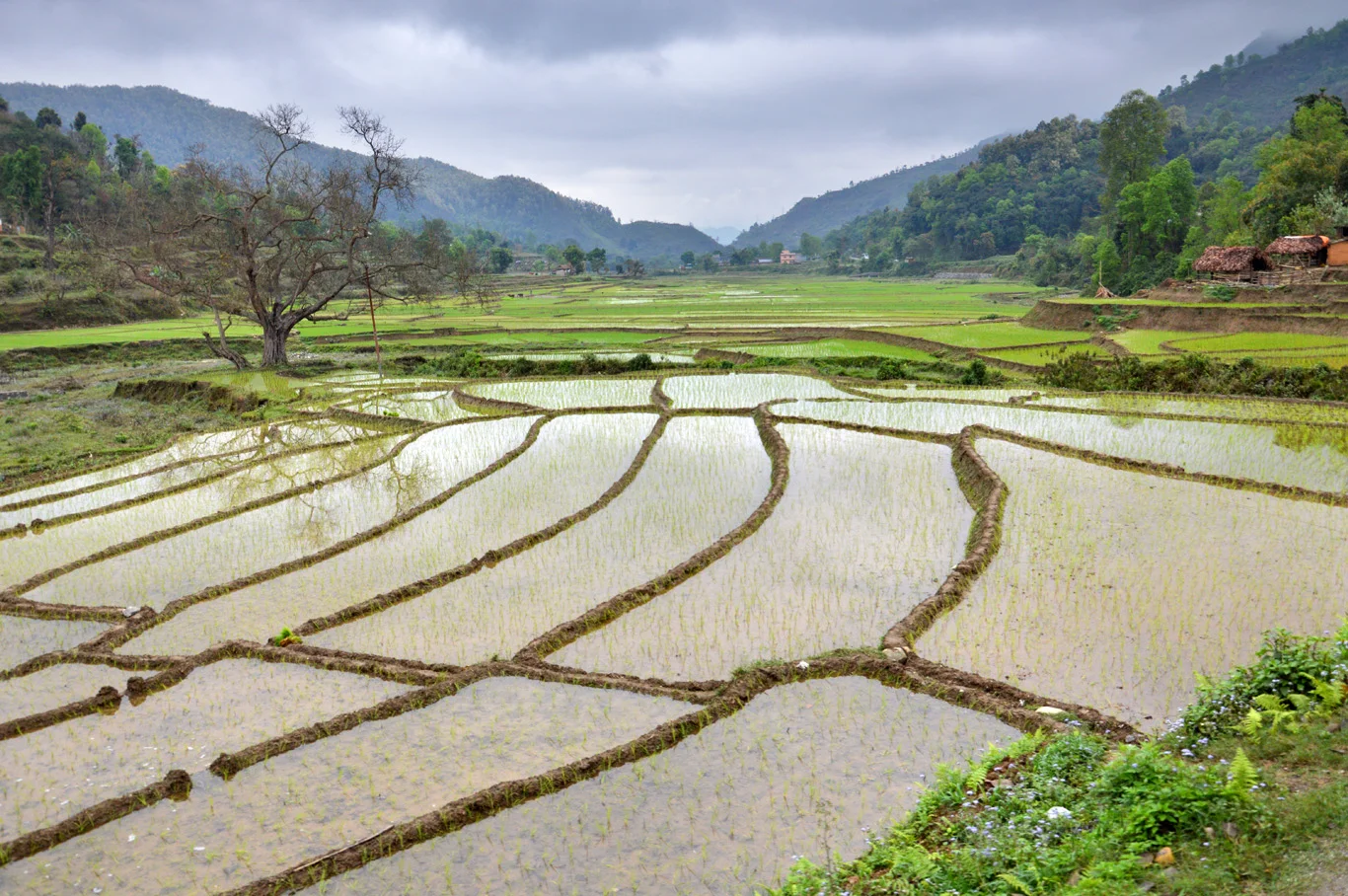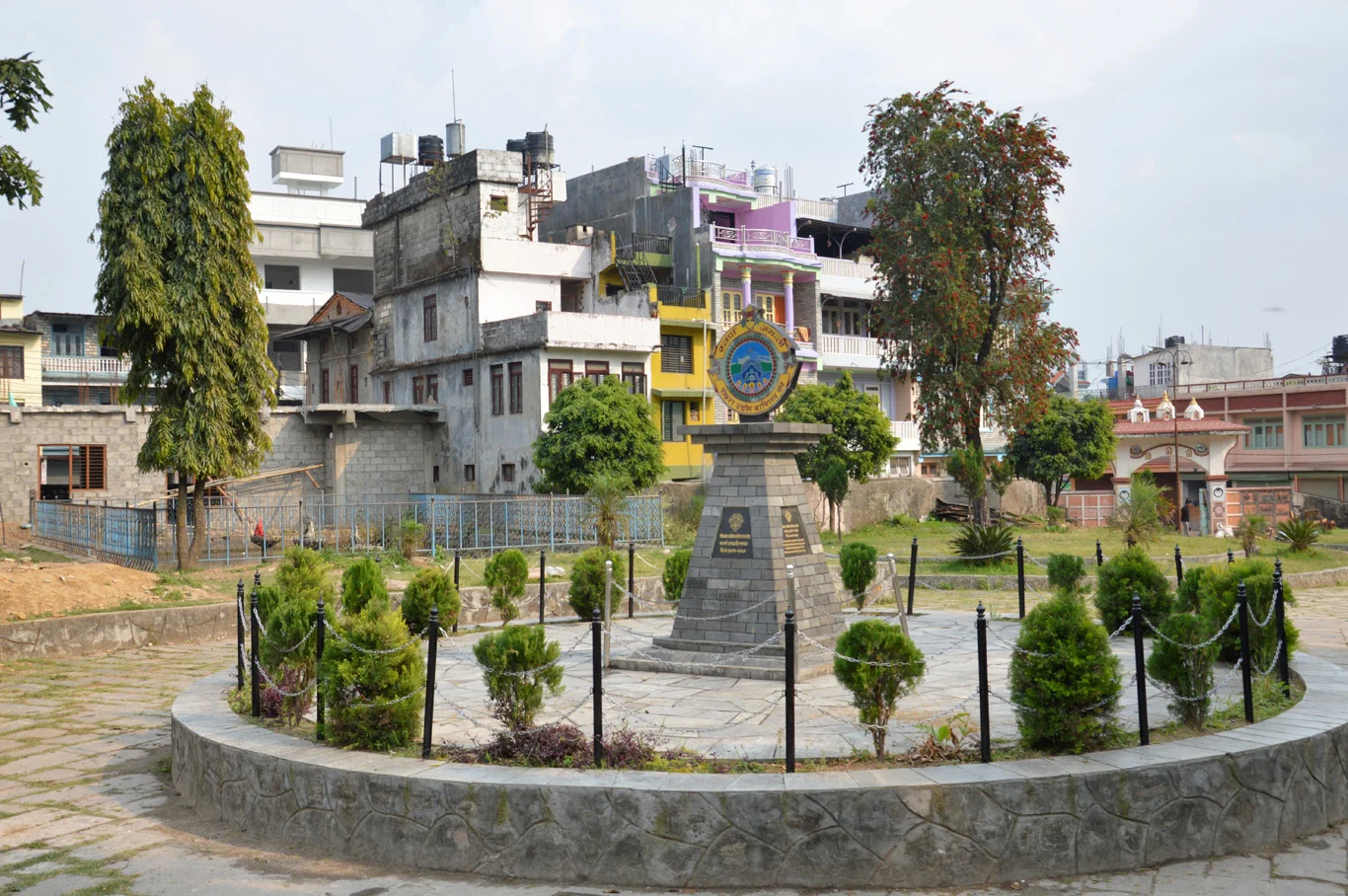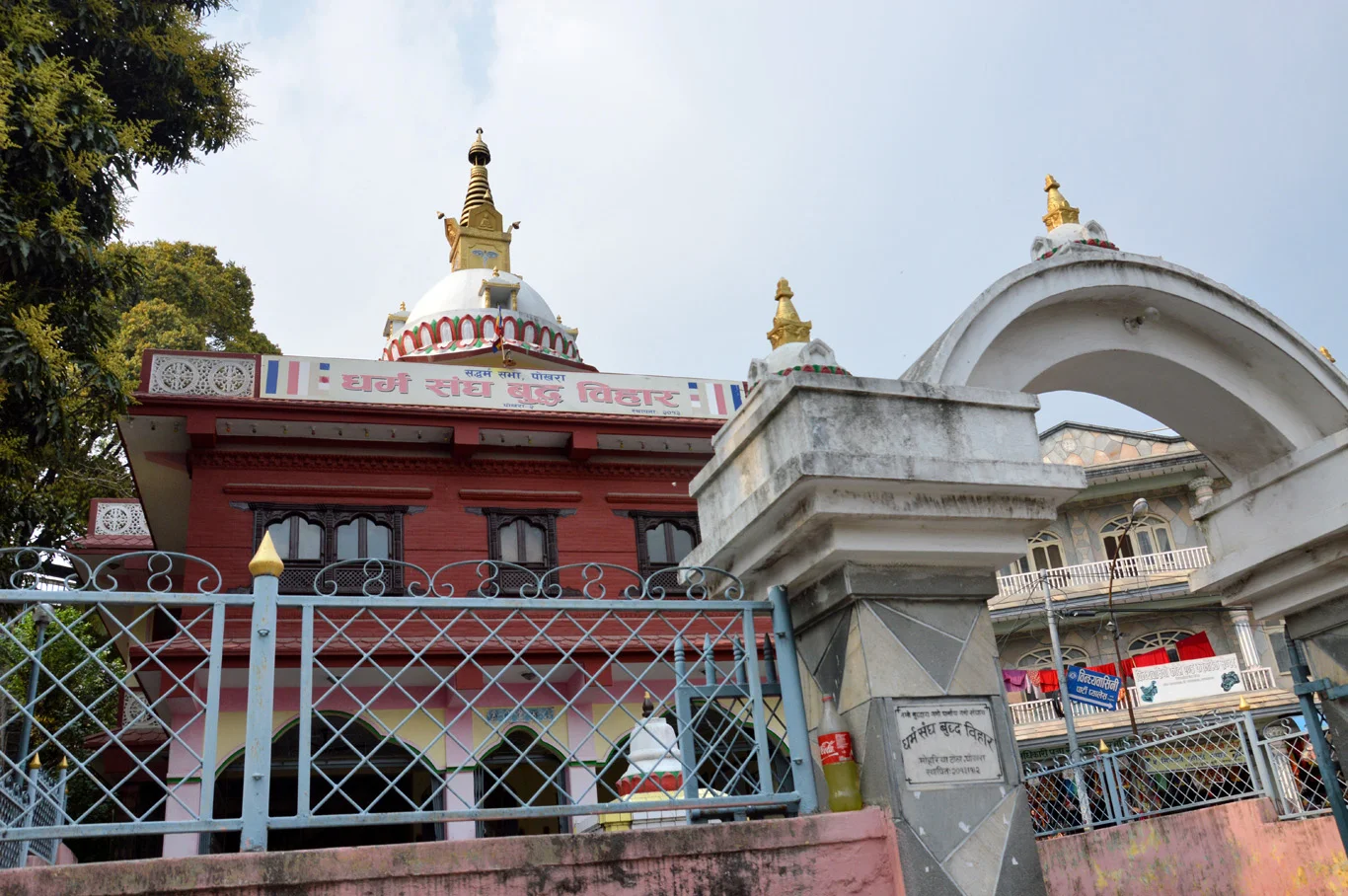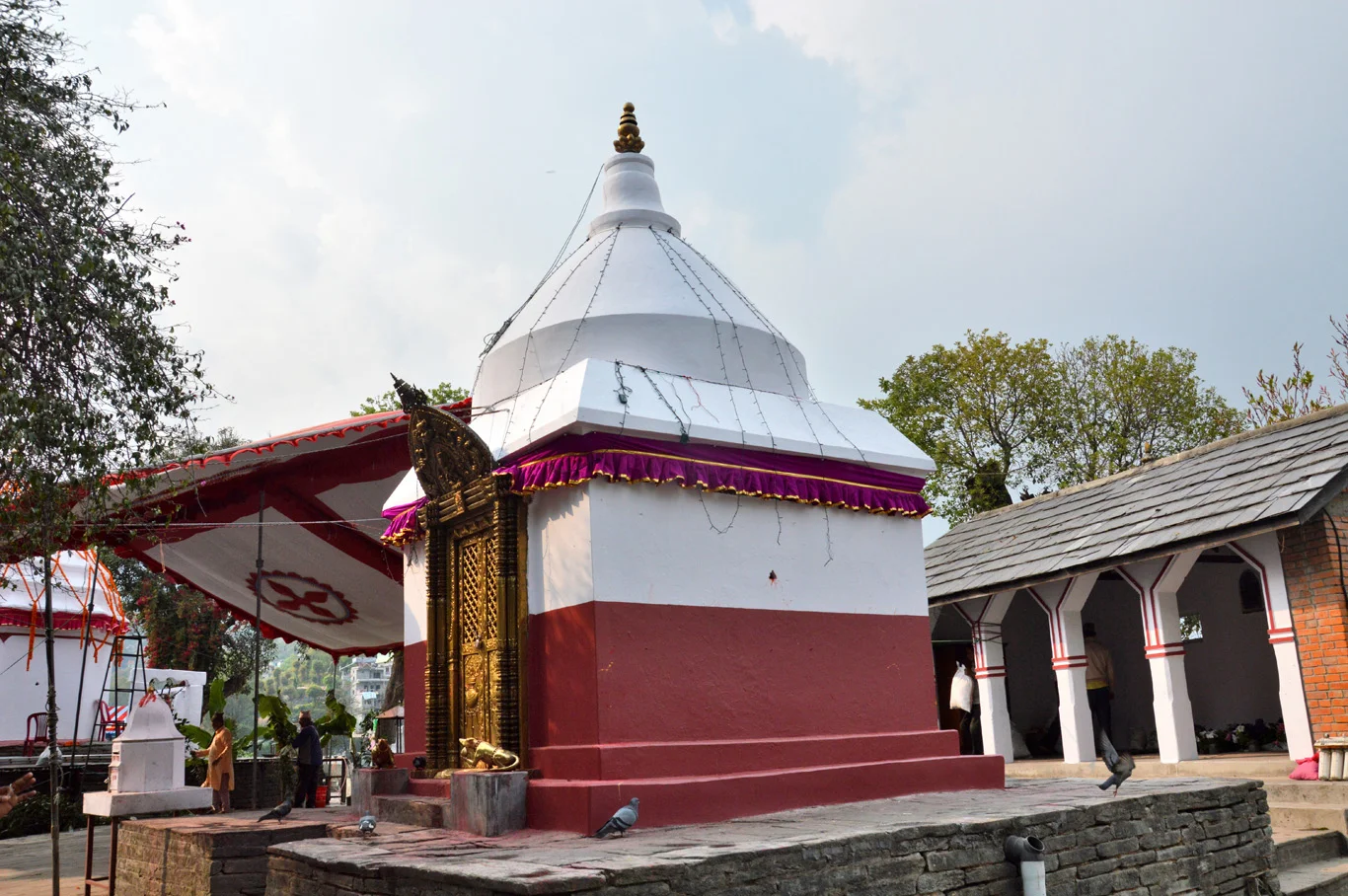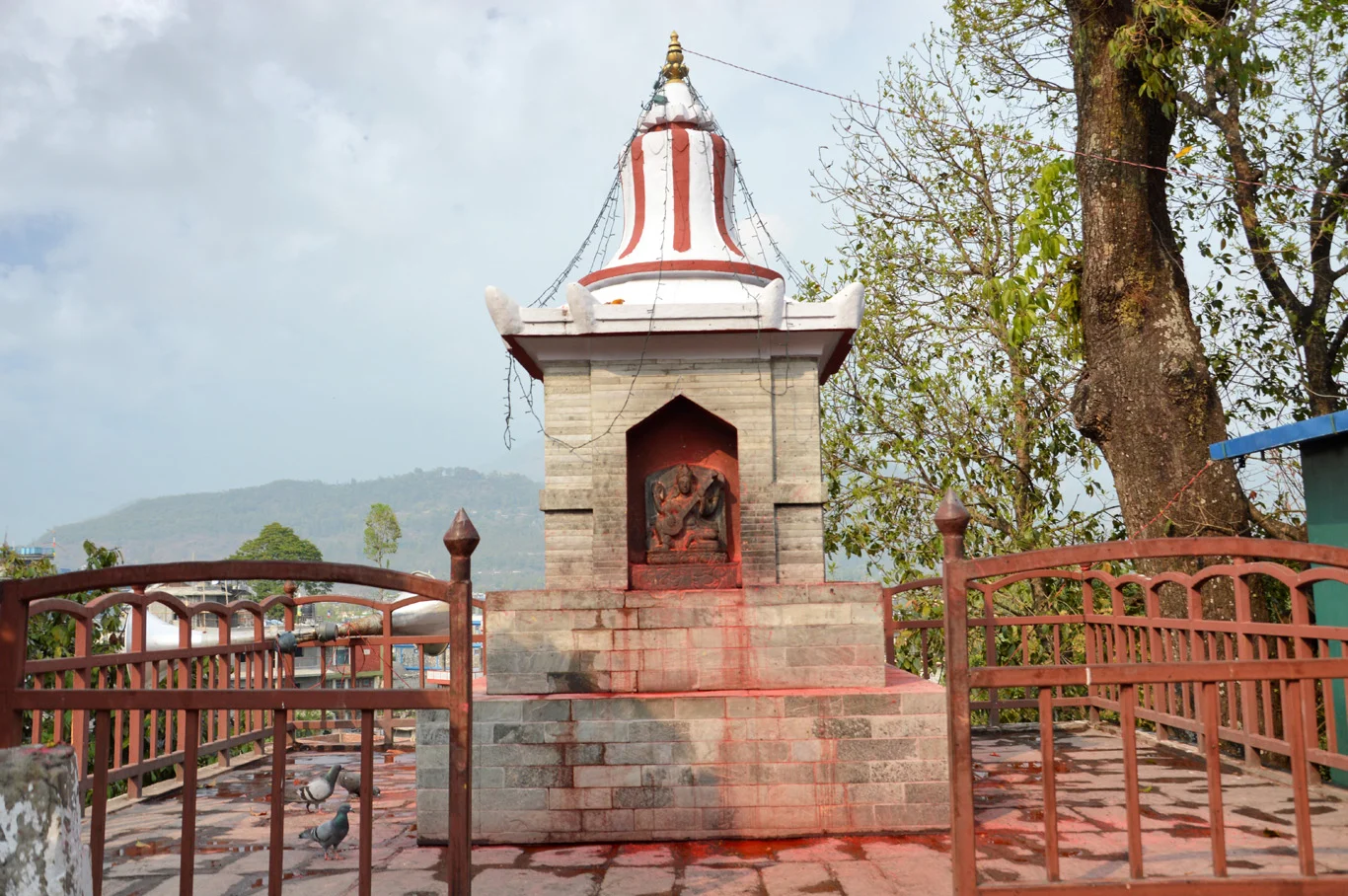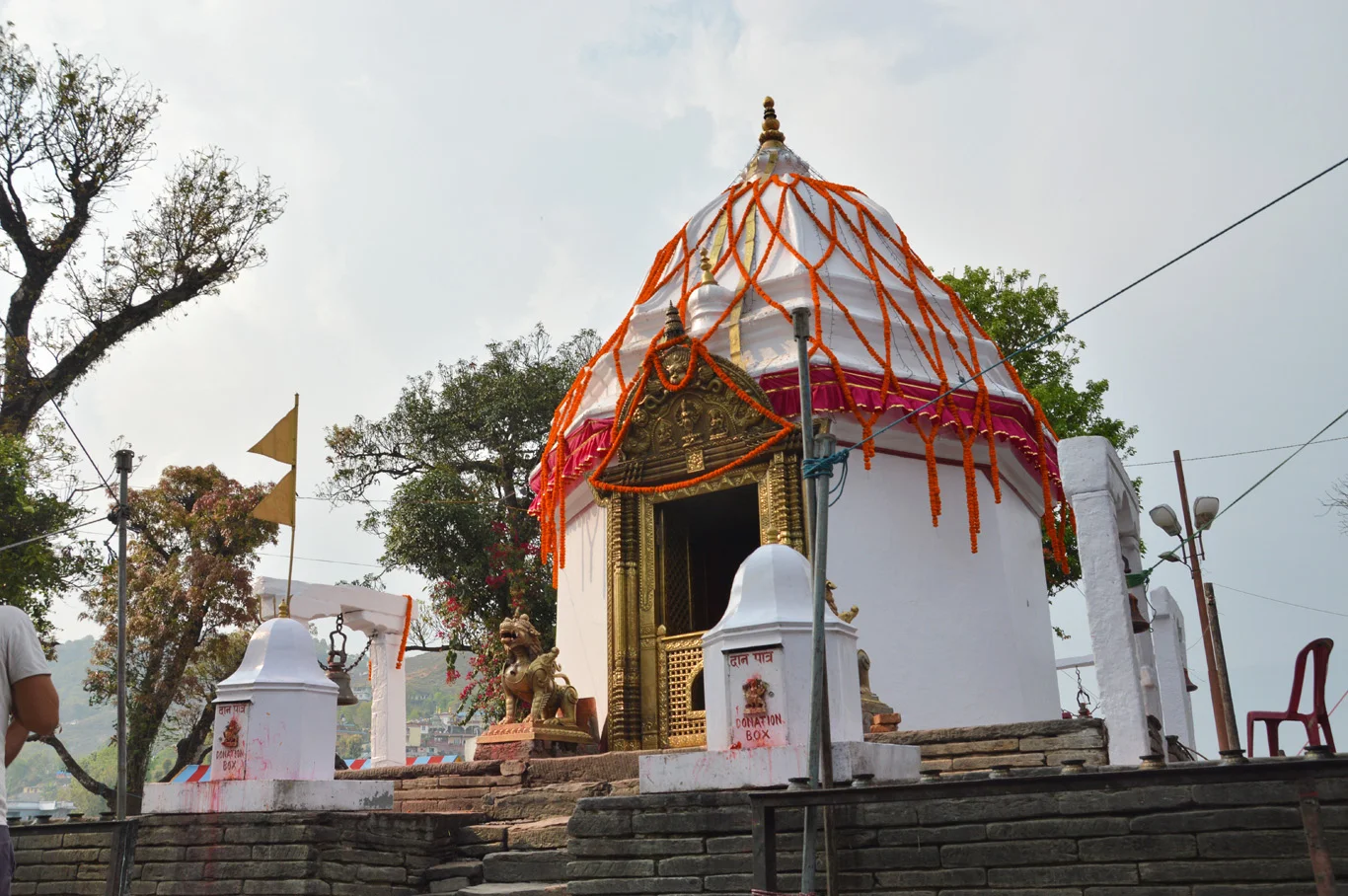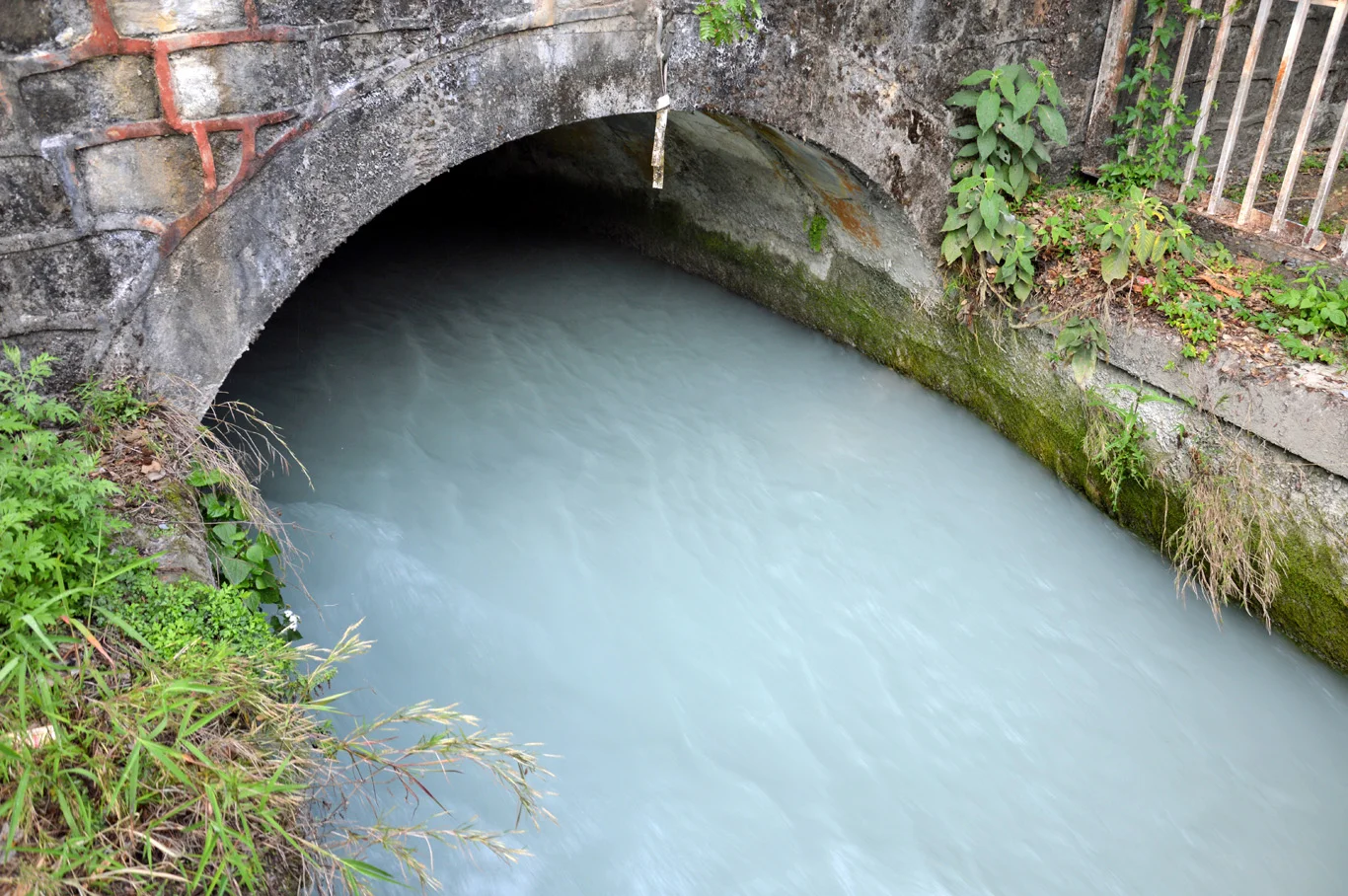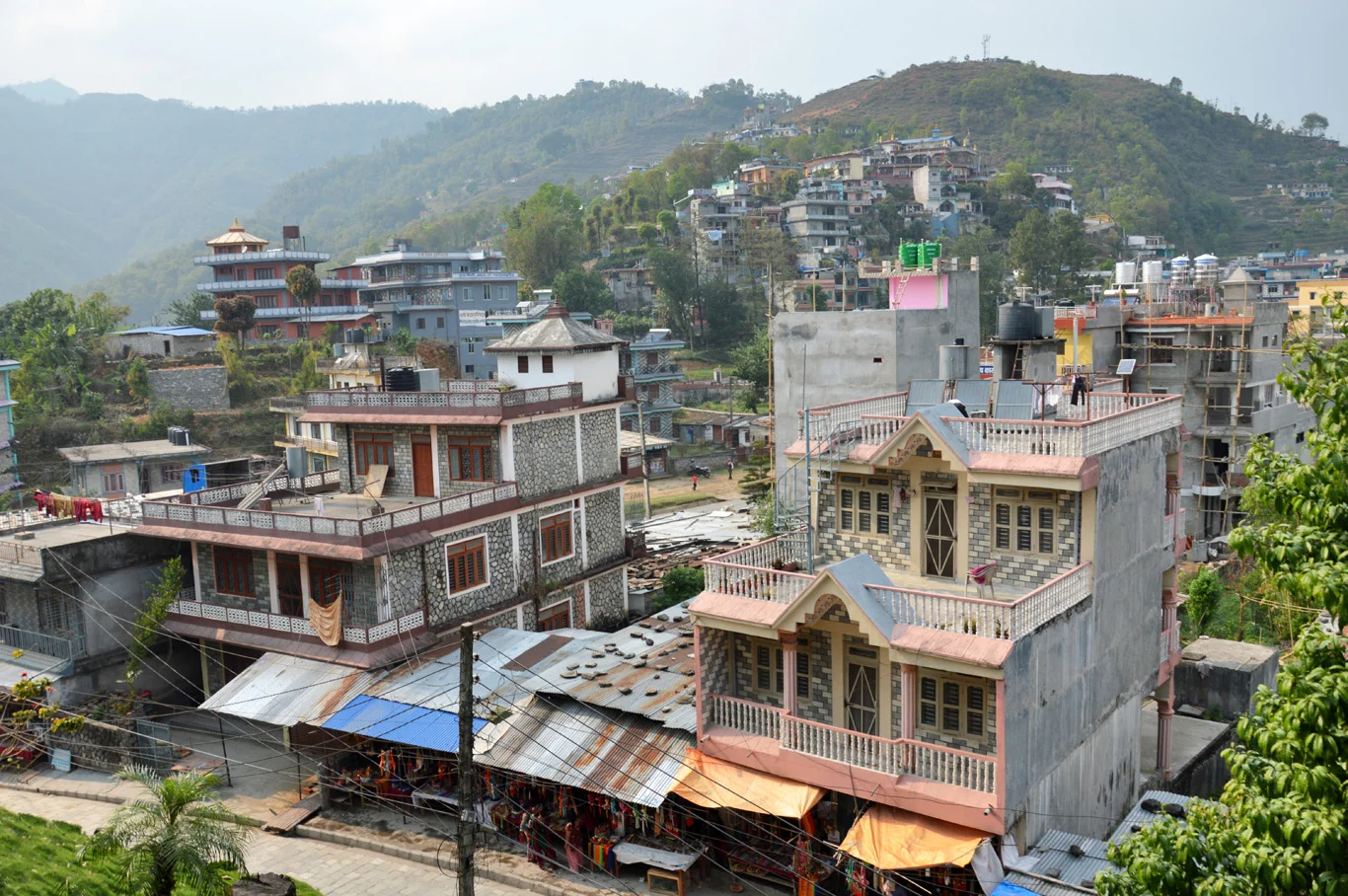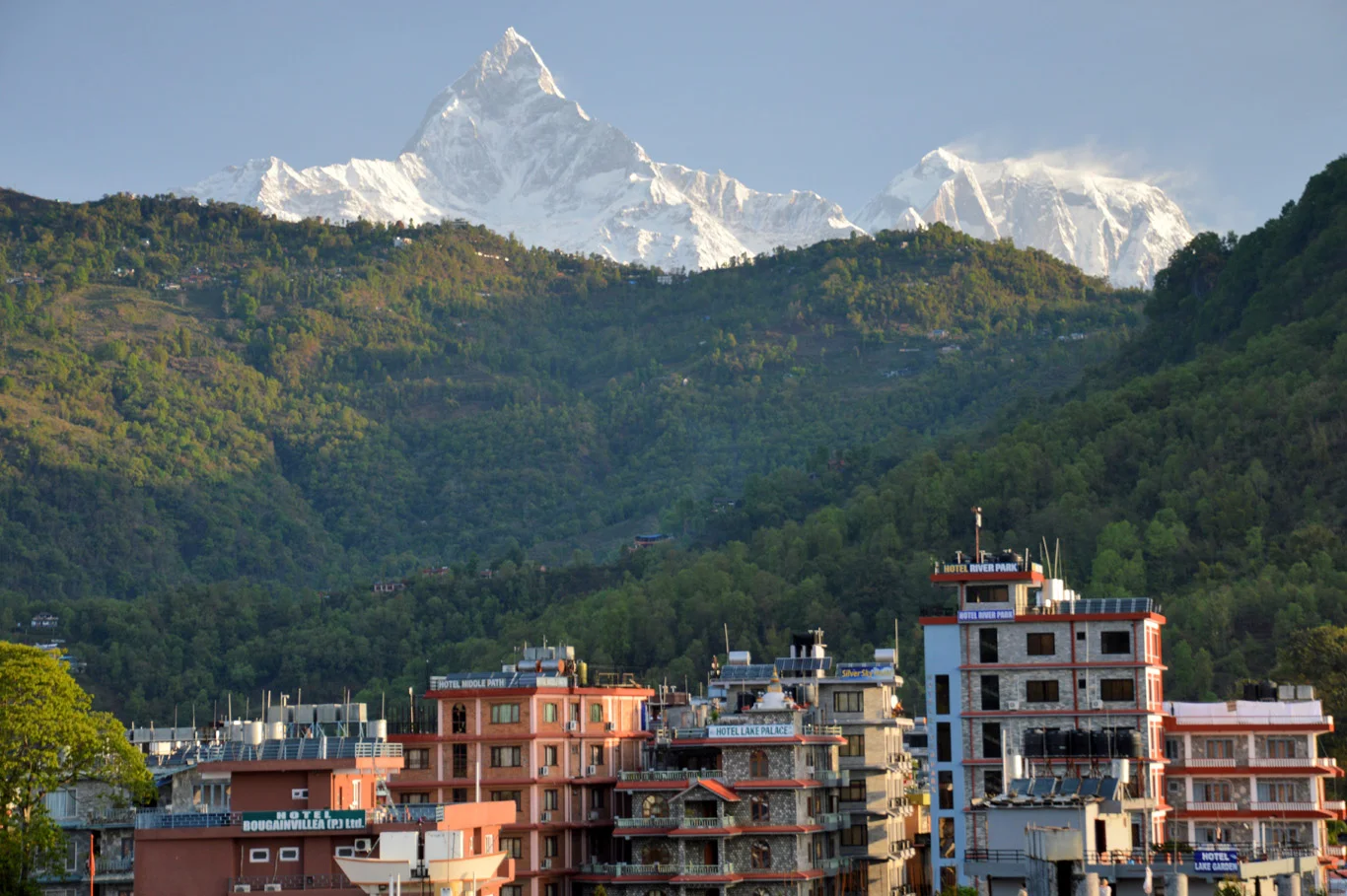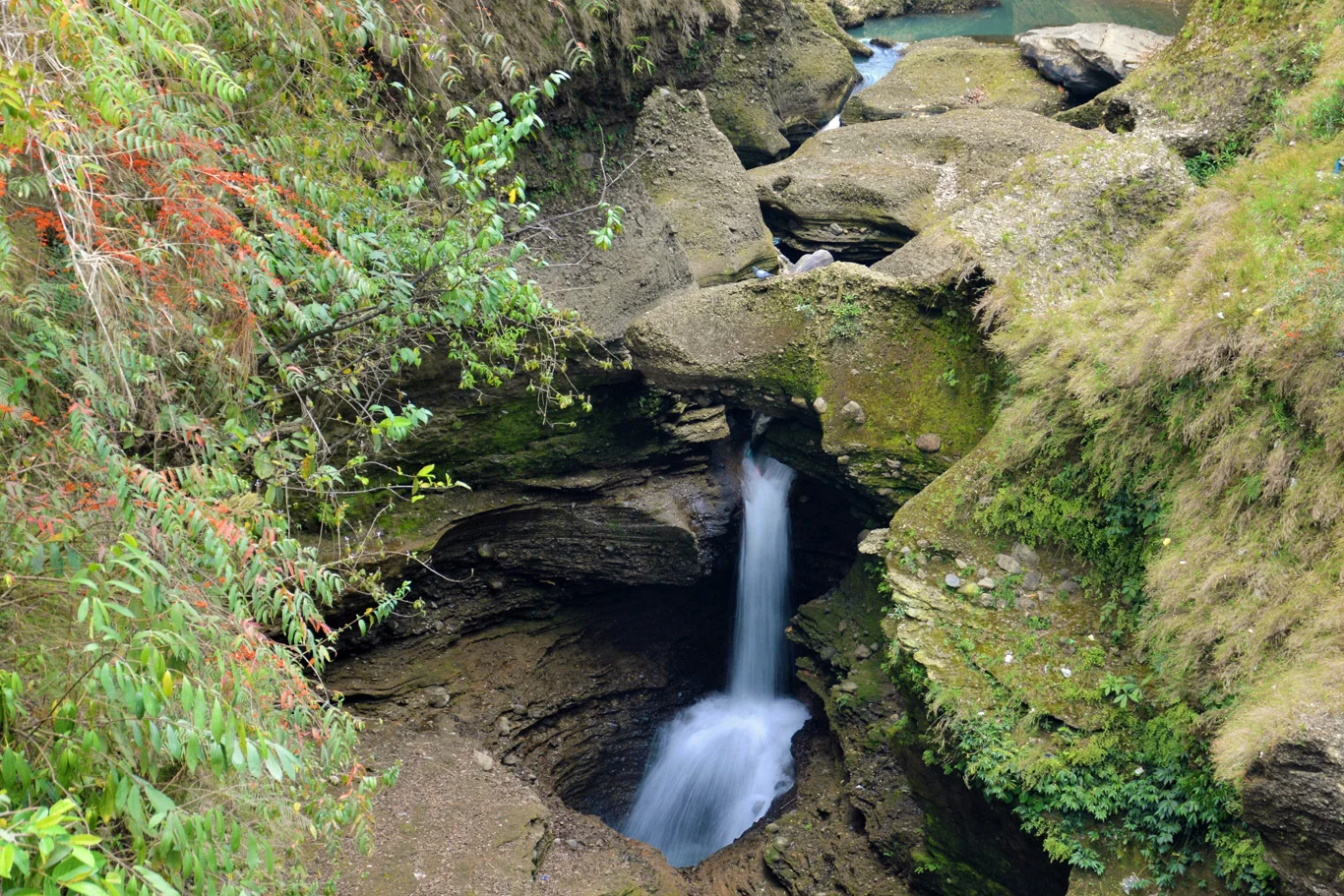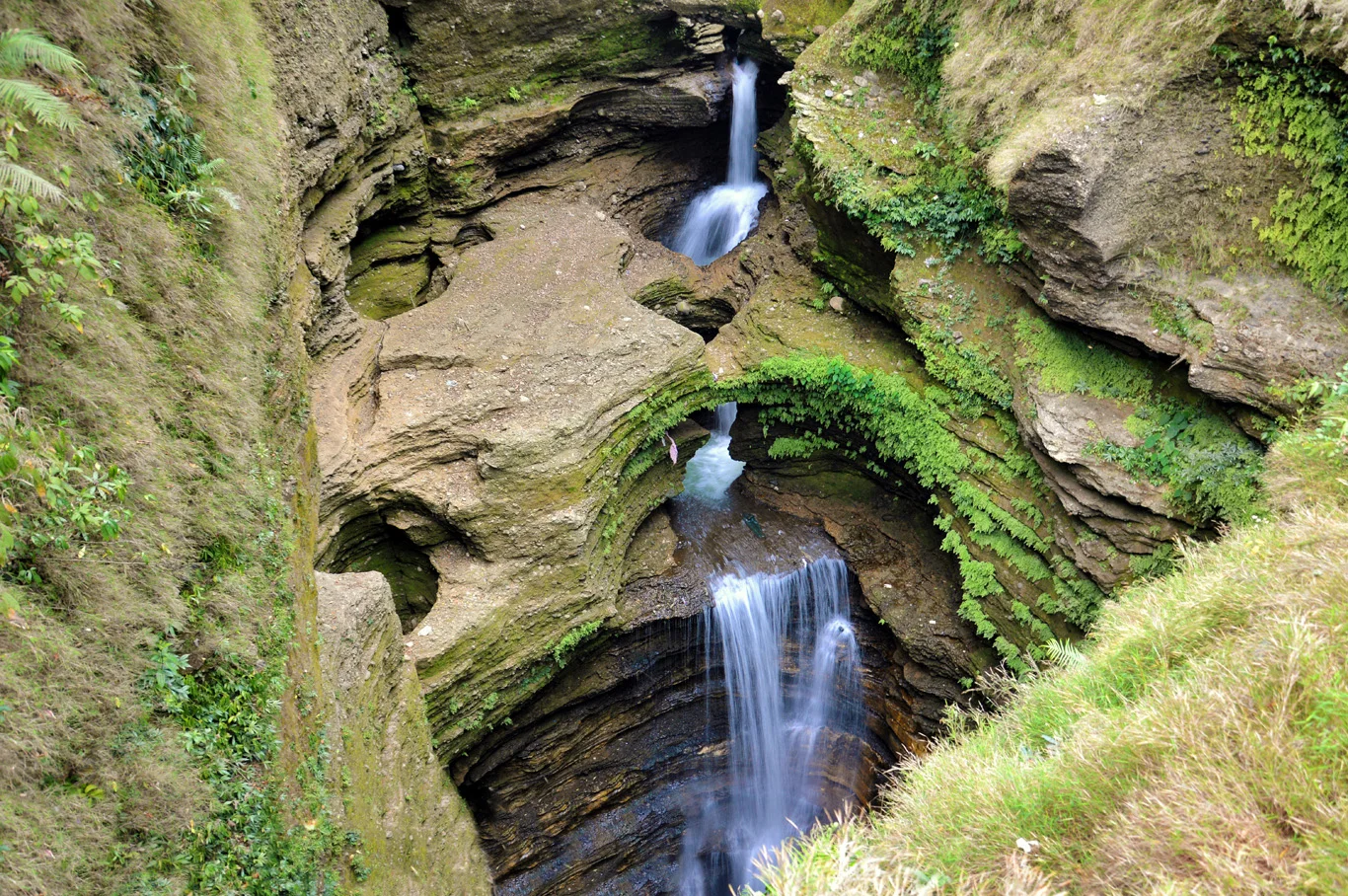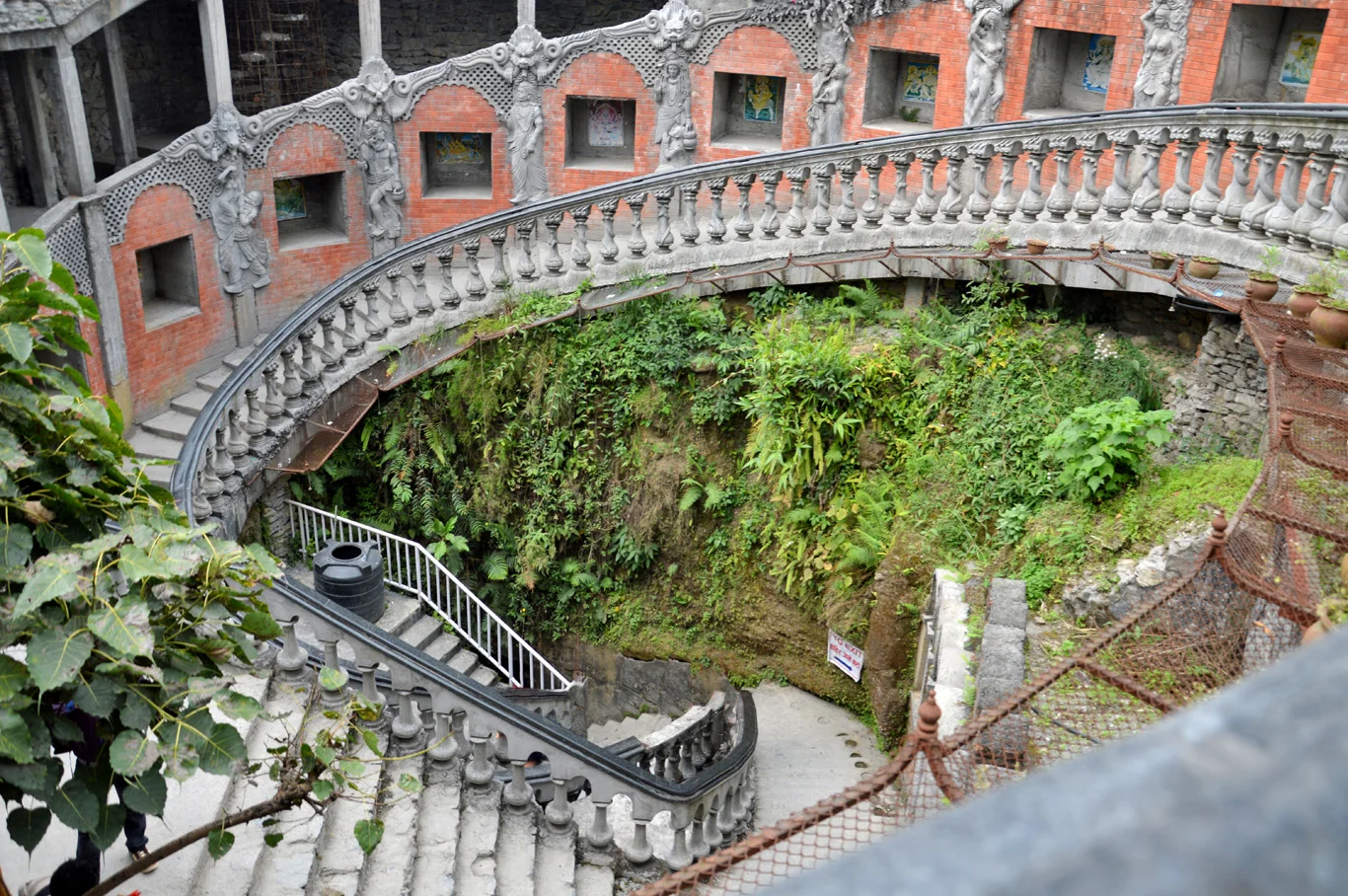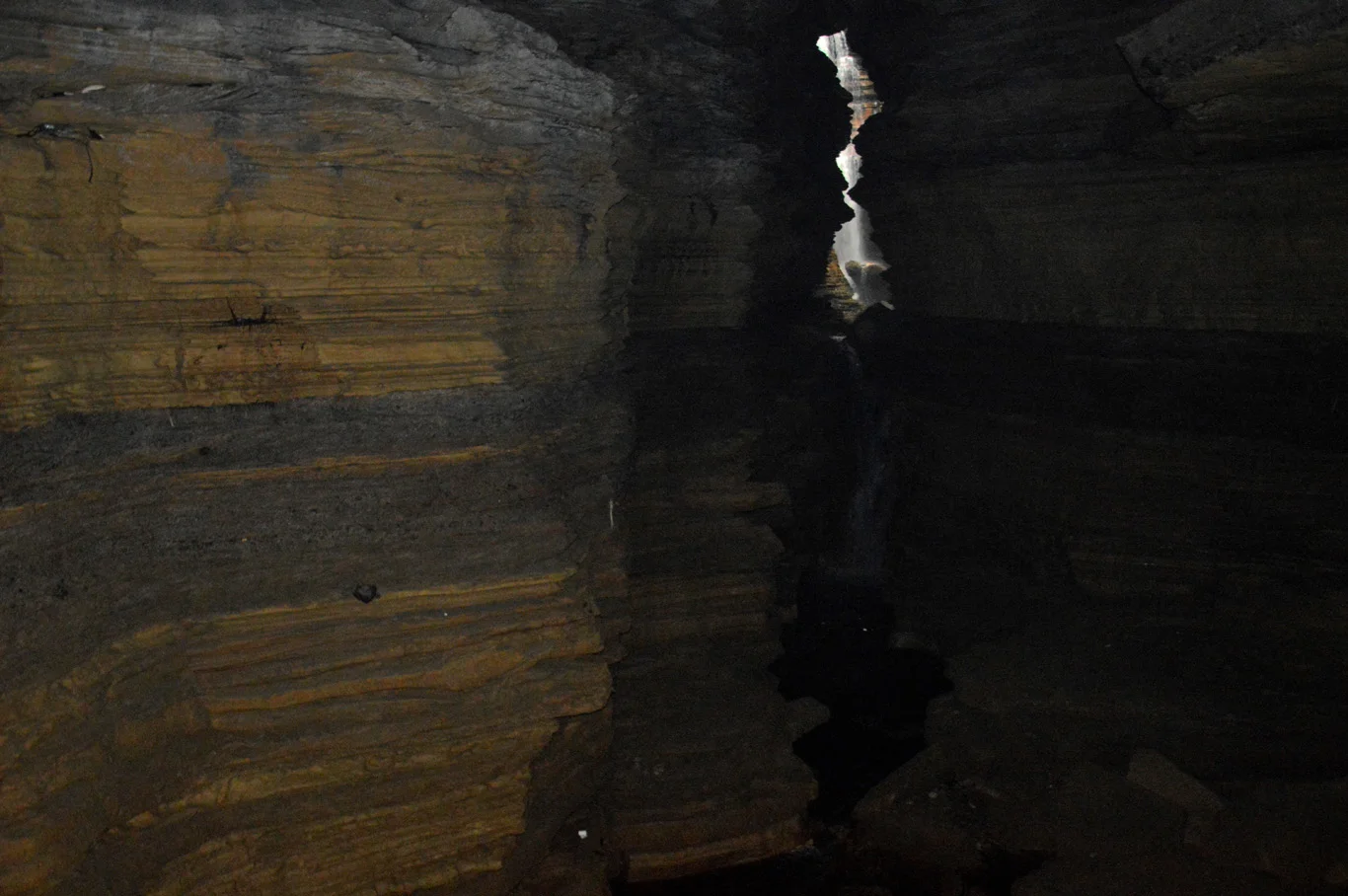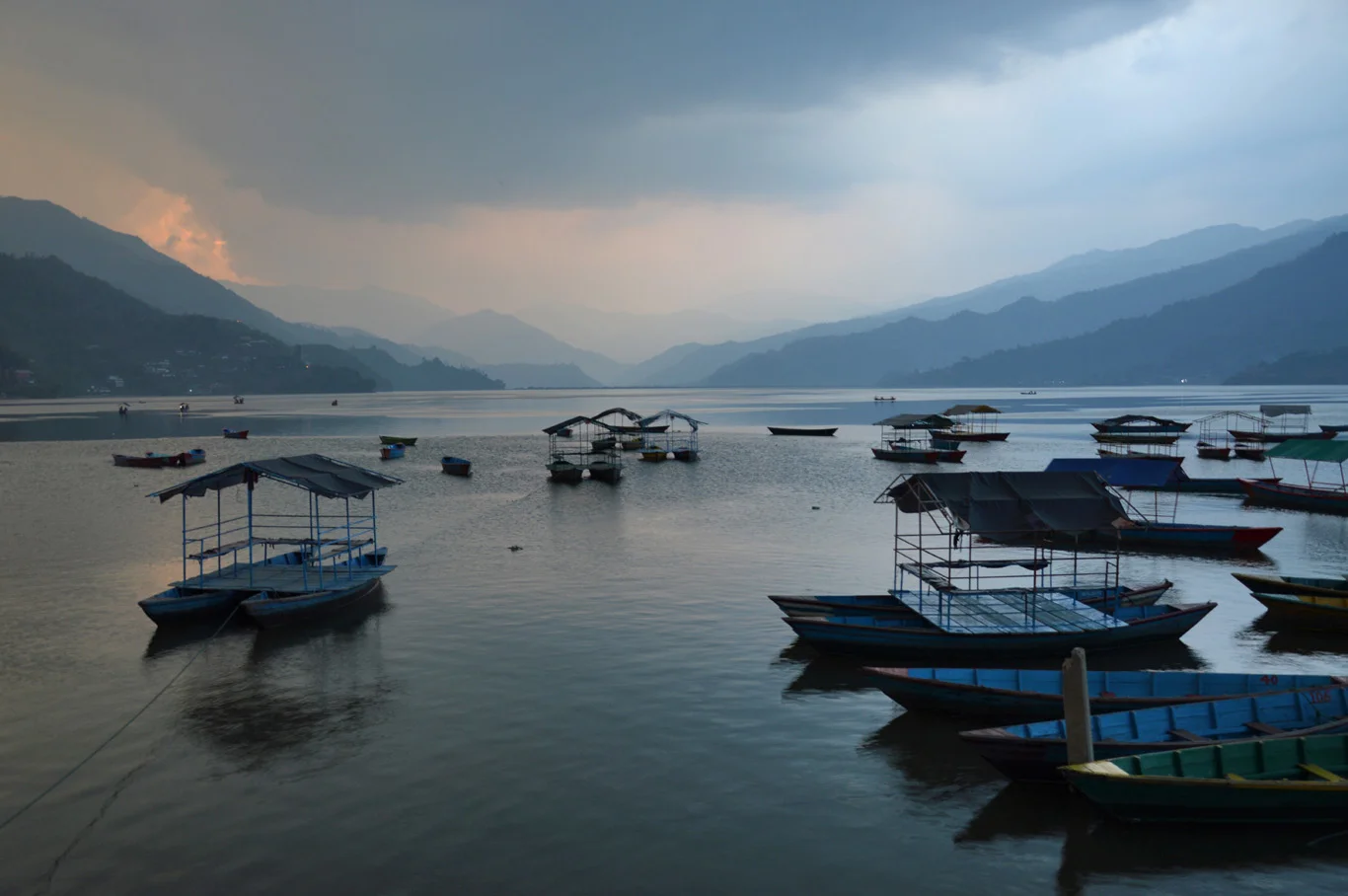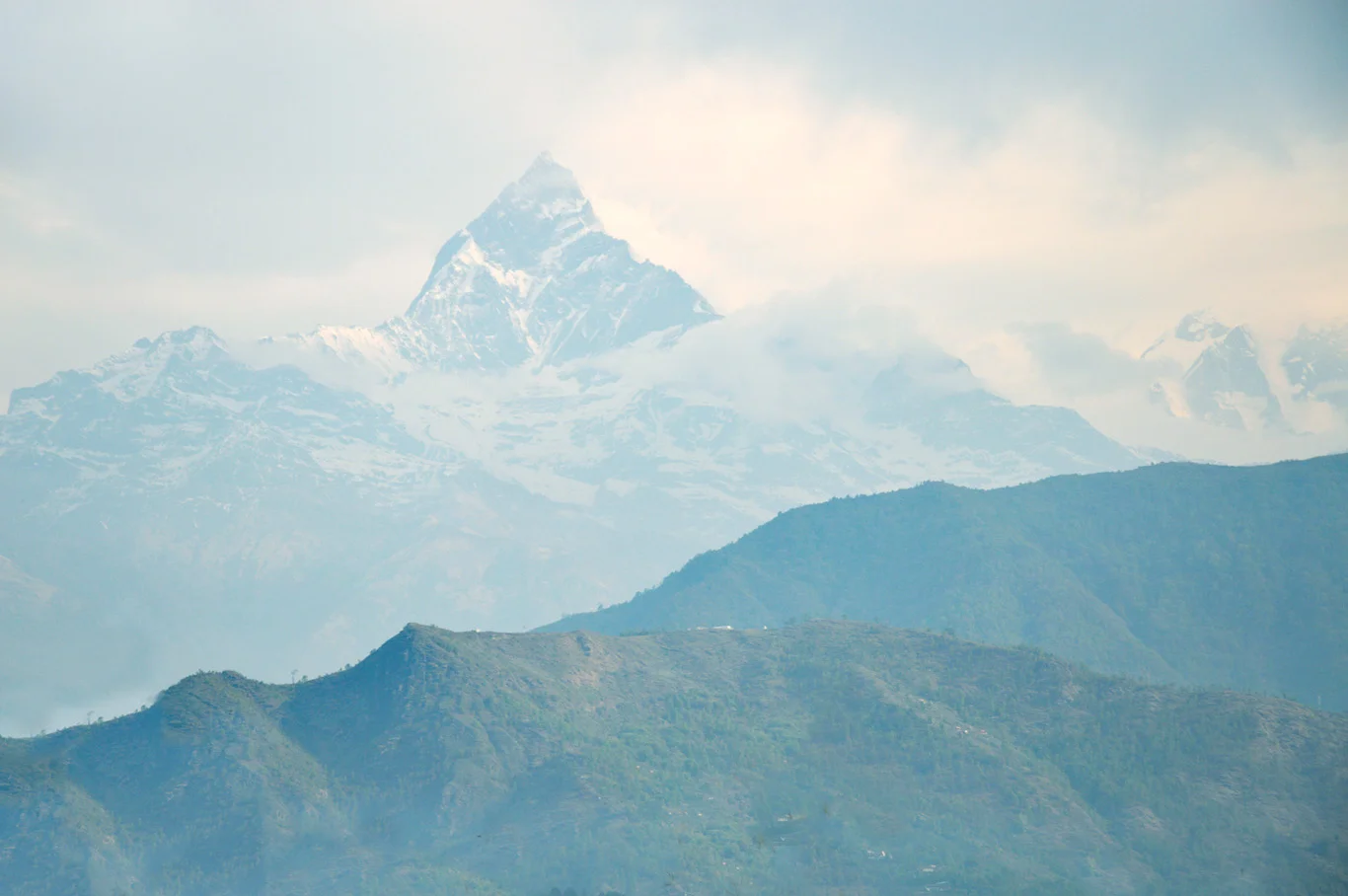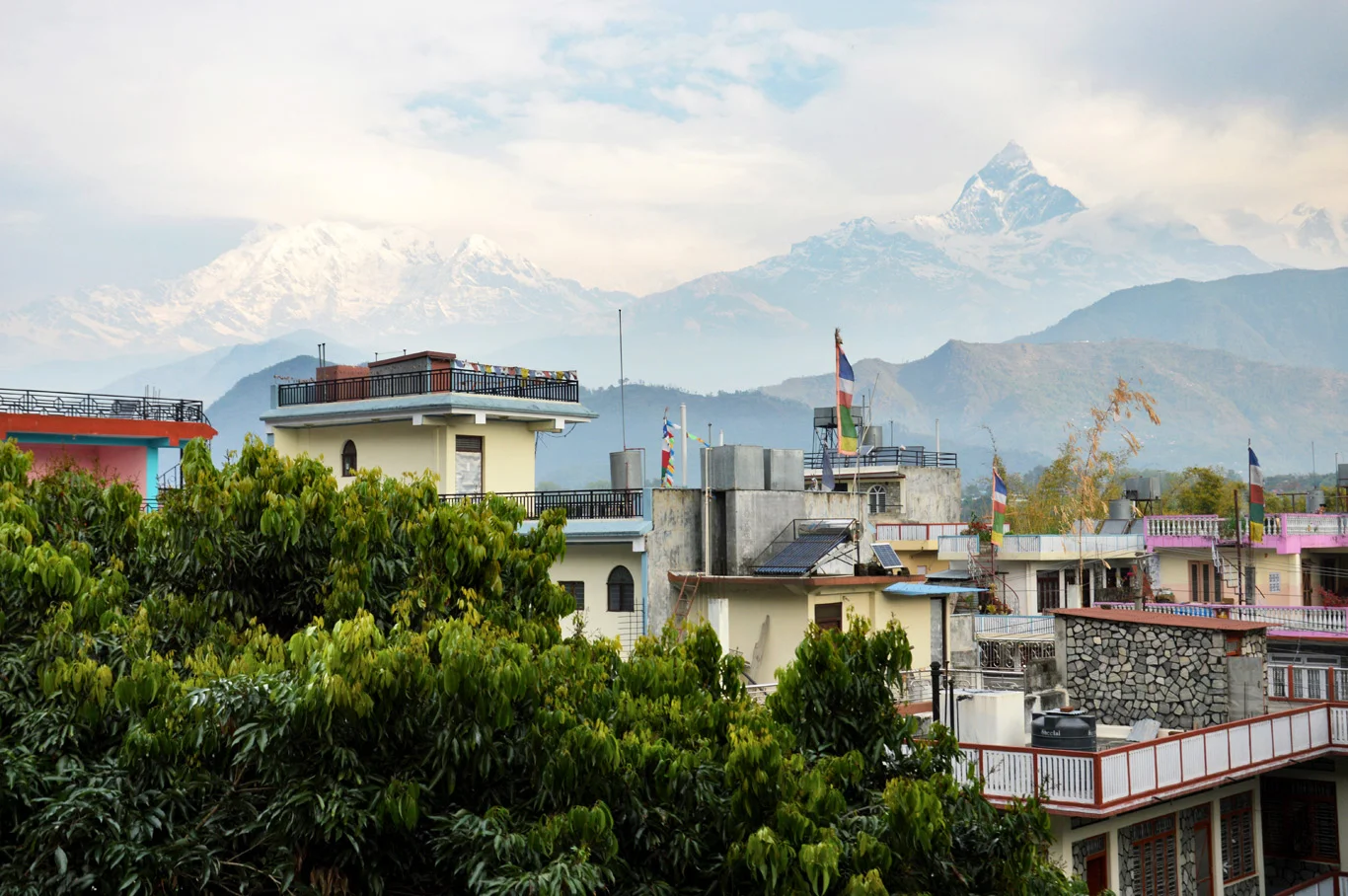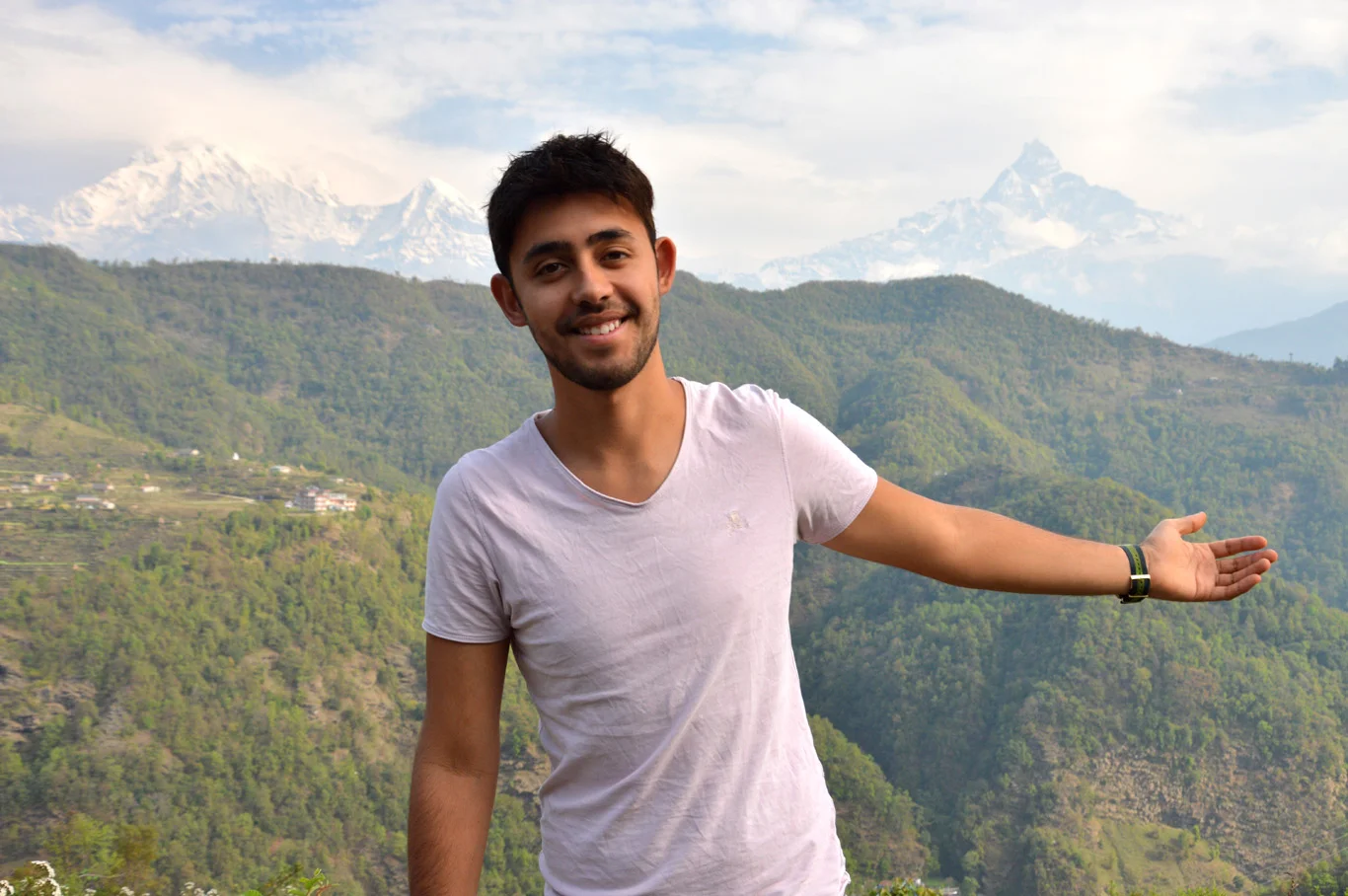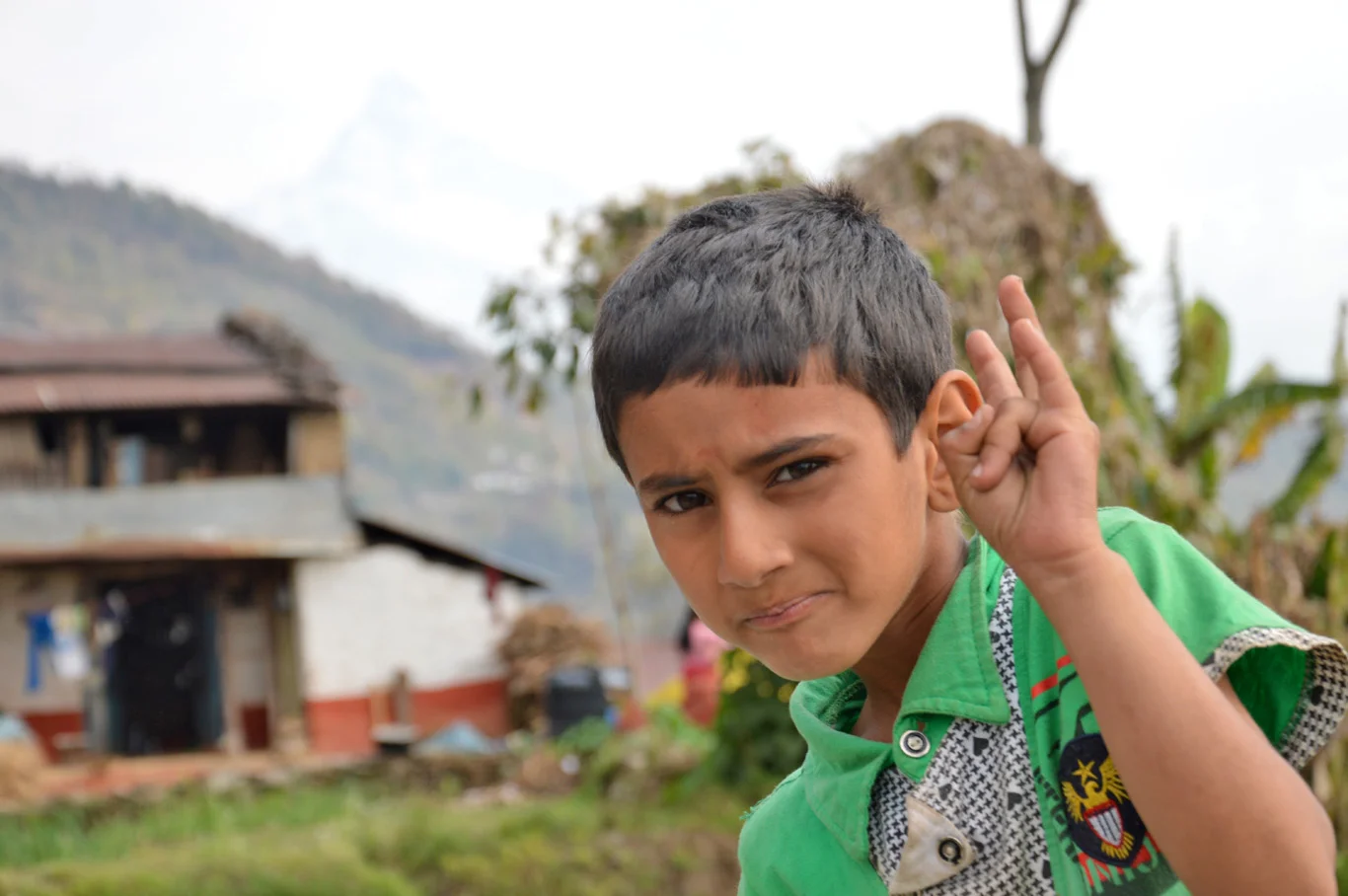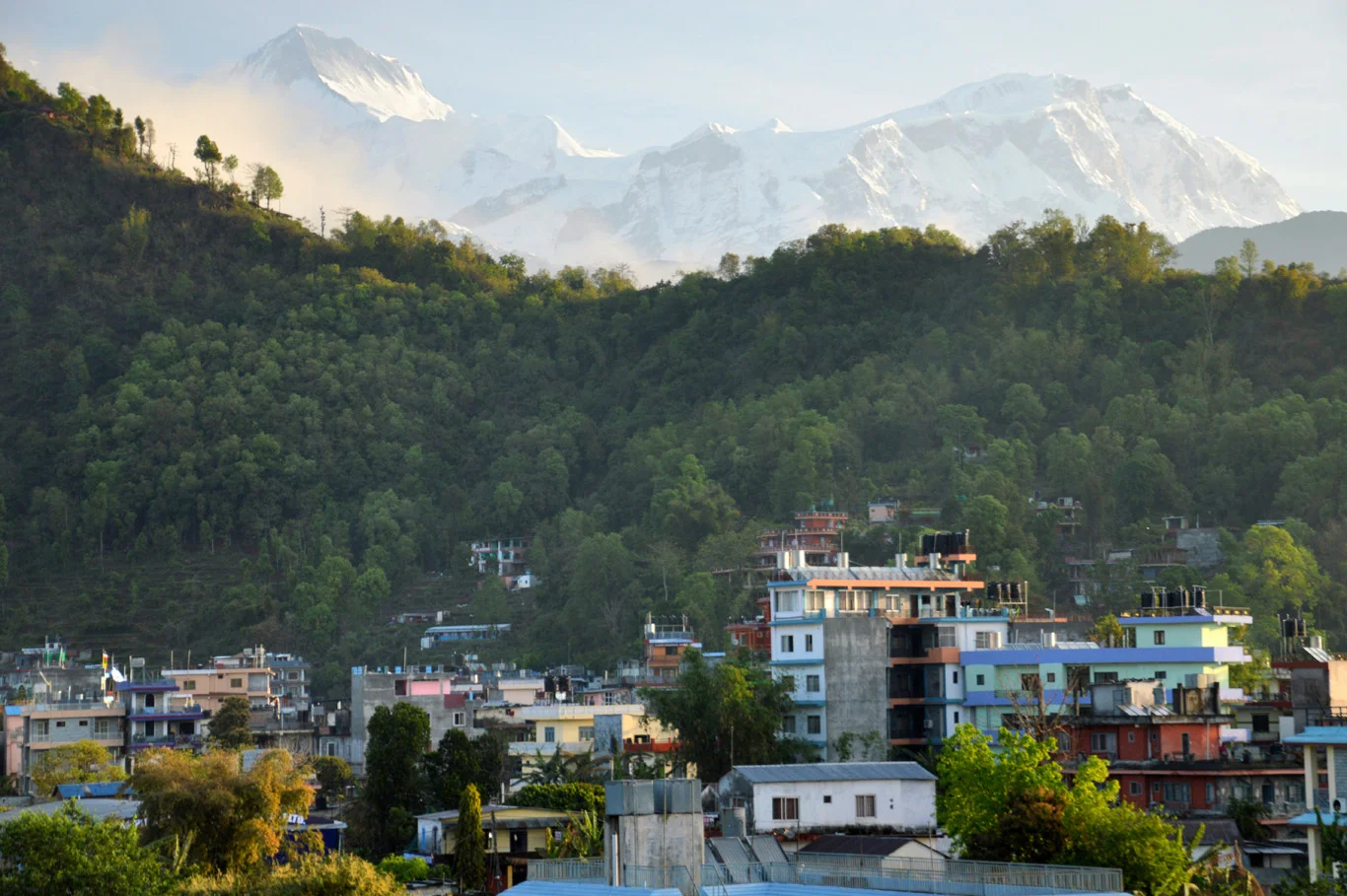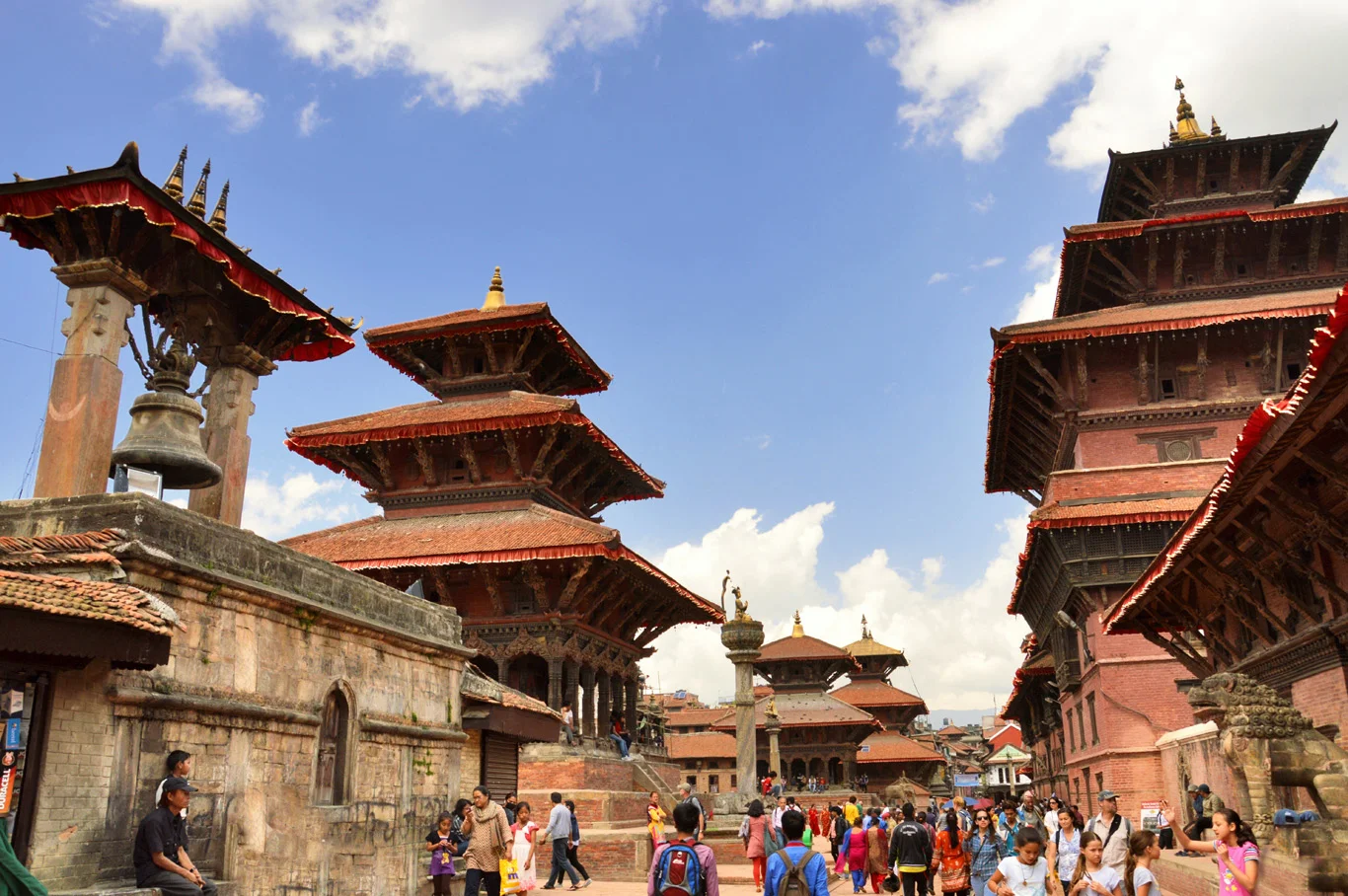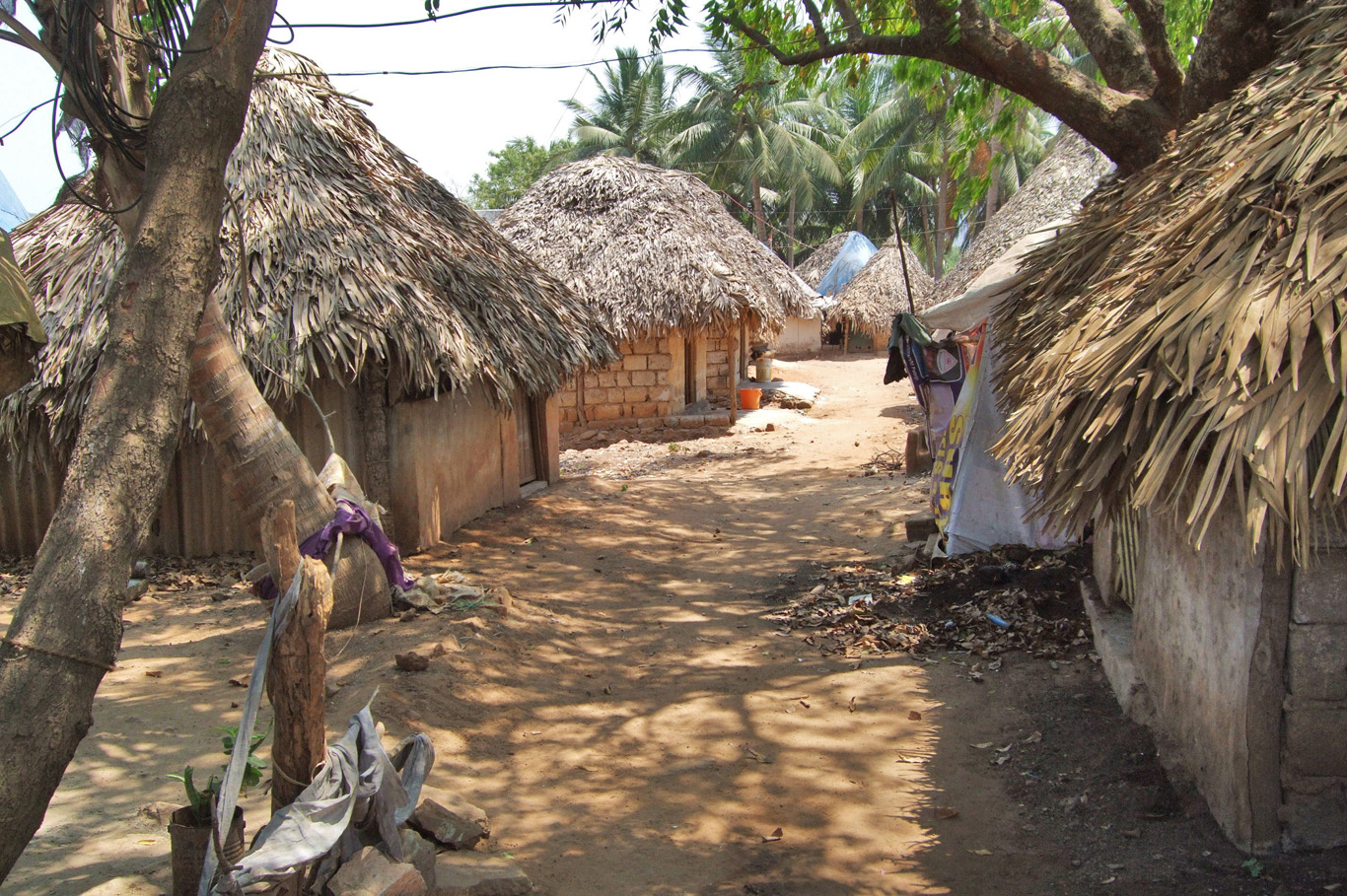Pokhara is the second largest city in Nepal, located at the foot of the Himalayan Annapurna Range. It may be quite difficult to get to the starting point of the Mount Everest Base Camp Trek as there are no roads there from Kathmandu but that's not the case with Pokhara where you'll see spectacular mountainous peaks as if they were in front of you. It's also very easy to get closer to the Himalayas and start hiking the beautiful, fairy tale-like, full of blooming rhododendrons Poon Hill loop trail, or more advanced Annapurna Base Camp trek. If you're lucky with the weather, you can spot the most beautiful, snowy, "Fish Tail" mountain which rises almost 7000 meters above sea level (original name: Machhapuchchhre - yes, the spelling is kind of crazy) right away from Pokhara's center.
How to get to Pokhara
The easiest way is to fly (quite pricey though - around 120 USD/105 EUR) from Kathmandu. This way, you'll also be able to admire the mountains from a bird's eye view. However, the flights might get cancelled due to weather conditions.
If you're on a budget, you can take a bus. You won't even have to look for a bus station - in Kathmandu, there are multiple tourist offices everywhere - you can buy a bus ticket there. There are many buses running between Kathmandu and Pokhara - the route is very "scenic" and no wonder is considered dangerous. The 200 km ride takes around 6 hours as the roads are not in a perfect state. This also includes a few stops in the cafes along the way - note that they are not likely to serve any meat. The fare is ridiculously low - more or less 800 NPR (7.50 USD/6.60 EUR).
I took the bus and I was able to recline the seat into a nearly horizontal position (but not all the buses are like this)! It was the most comfortable bus journey I've ever had in my life.
Colorful trucks - typical of India and Nepal, on the way to Pokhara
Rice fields
Pokhara
Entrance to Binhyabasini Temple
Binhyabasini Temple
Binhyabasini Hindu Temple
Binhyabasini Hindu Temple
Binhyabasini Hindu Temple
What to see in Pokhara and how to get around
The town center
Let's be honest - no one comes to Pokhara for Pokhara itself! Everyone comes here to enjoy the mountains or sport activities like paragliding. When I arrived in Pokhara on the first day, I was so disappointed. The area around was highly polluted and the bus station was in a hopeless, crumbling condition, just like in India. Moreover, the weather wasn't great either - it was very misty and no sign of any mountains was visible. It didn't look attractive at all. Fortunately, the next morning it was all going to change. Pokhara turned out to be a pretty nice town after all. Of course, it pales in comparison with the wonderful mountainous villages and trails but it does have sights worth noticing.
Me and my friend checked into one of the hotels in the center and started a tour right after arrival. To be honest, I dislike guided tours and try to explore things on my own whenever possible, but in Nepal, local guides are a good option. Not only it's really inexpensive to rent a guide, but it also helps the local economy. They can take you to all the most important places and you don't have to worry about using the public transport within the city which can be challenging! You can even walk around most of Pokhara as its central area isn't too big.
I know a local, trusted (and cheap) guides and tour services that can tailor a tour according to your needs - they were extremely helpful (I even insisted in taking public buses at times and they helped me arrange everything). If you want to find out more information, contact me here.
Around the center (which is way nicer than the suburbs and bus top area), you'll find many great local as well as high quality western restaurants, bakeries and cafes. The national meal of Nepal - dal-bhat is very tasty, however if you're a meat lover like me, you'll be disappointed. Even the chicken version comes with a few pieces of bony poultry, but you can refill the veg as much as you want. So, if you're a vegetarian, you'll be in heaven!
In the center of Pokhara, you can also easily get any equipment you need for trekking and hiking in the area.
Bindhyabasini Temple
Our first stop was Binhyabasini Hindu Temple where you can find several shrines and statues. It's nothing extraordinary or special, but the hill provides a beautiful views (if the weather is good). The Binhyabasini Temple is the main temple and the most holy site in Pokhara city. It's dedicated to goddess Bhagwati.
We were extremely unlucky with the weather in Nepal - on the first day we didn't have a chance to see even a tiny piece of a mountain. So, for us, there were no views.
Gurkha Museum
Next, we stopped at the Gurkha Memorial Museum - the museum contains all details regarding the history of the fearless Gurkha warriors who had joined British and Indian armies. Inside, you'll see the uniforms, weapons they fought with and medals they received. Entry fee: 200 NRS (1.90 USD/1.60 EUR). Opening hours: daily from 8 AM to 4:30 PM.
Davis Falls and Gupteshwor Mahadev Cave
The Davis Falls and Gupteshwor Mahadev cave aren't most striking or greatest in the world. But what makes them unique - it's the location right in the city center! It's a nice piece of nature in quite heavily built up area.
Davis Falls (a part of the holy river Seti), are within a beautiful gorge with two or three cascades - the water flows down through the underground passage and to on the Gupteshwor Mahadev Cave.
The waterfall is named after a Swiss woman (named Davis) who drowned while swimming nearby - she was unfortunate enough to have gotten sucked in by the current. The Nepalese name is Patale Chhango which means "underworld waterfall".
In the cave, you can spot a tiny slit between the rock - which spectacularly illuminates the inside with the natural light. Also, the beautiful staircase down to the cave is worth noticing. The entry fee for both sight is 220 NRS (2 USD, 1.70 EUR).
Phewa Lake and the worst thunderstorm in my life
Phewa Lake is also situated right by the tourist center, with cafes and restaurants along its shore. You can rent a boat and row around - it's quiet and beautiful. As I've mentioned before, the day when we were visiting Pokhara wasn't particularly nice, it was overcast and no mountain peak was visible. We were expecting rain in the evening, hoping that it might clear up the sky in the morning. But what actually happened, exceeded all our expectations.
In 10 minutes, the dark clouds came, it started to rain heavily and then hail appeared within the next 5 minutes. We were right by the lake which suddenly disappeared! In seconds, it felt as if we ended up in a blender. We hid under a roofed shed but the wind was so strong that the trees were falling, pieces of roof tiles were flying around and the roofs of the cafes nearby were collapsing. Not to mention the lightnings that caused power failure - there was no electricity and light. If someone had been in the boat on the lake at that time, they wouldn't have had any chances to survive. The hell lasted around an hour, then after we safely returned to our hotel, another thunderstorm broke out. However, this time not as violent. But the sky next morning was crystal clear indeed!
Gurkha Museum
Bright color of the holy river Seti
Buildings in Pokhara
Himalayas in Pokhara
Davis Falls
Davis Falls
Staircase to Gupteshwor Mahadev cave
The cave inside
Phewa Lake - right before the storm
The famous fish tale mountain (nearly 7000 meters above sea level)
Pokhara
Pokhara - sightseeing flight
View over the Annapurna Mountain Range
Terraced fields
Village near Pokhara with the view
A local boy insisted to pose for a picture
Pokhara at sunrise
Bus station in Pokhara
Pokhara outside the tourist zone
Capricious weather - Best time to visit Pokhara
The mountain ranges are undoubtedly amazing but they create specific micro climates that are a source of unpredictable weather conditions. To enjoy it to the full, you must be lucky to have the sky clear, otherwise you won't see anything - and it can be frustrating if you're right in the middle of the highest mountain range in the world and the only thing you see is fog.
To improve your chances and avoid such unpleasant situation, start very early in the morning (ideally before sunset). When I was in Nepal, although I traveled in March which, supposedly was a good season for trekking (nice weather and blooming rhododendrons), it rained 90% of the time. Maybe I was just unlucky. However, most of the mornings were clear (although not for long) and I had a chance to catch a glimpse the full glory of the Himalayas. Another good time to do trekking near Pokhara is when the weather clears after monsoons - October/November.
Outside Pokhara
Surely, you'll be spending more time out of Pokhara rather than in the city. There are many opportunities, treks and viewing points all over the area. Literally, every corner is good to admire the views. For a day trip, the village of Sarangkot is ideal. For more days (depends on how many you wish), try Annapurna Poon Hill Trek. I did a three-day trek to Ulleri, Ghorepani, Poon Hill and Ghandruk. I have described it here in detail. Although the weather was bad, I felt like in heaven with all the flowering rhododendrons, little, sleepy villages and absolutely most spectacular views you can imagine. If you have a chance, don't even hesitate - just do it !
If you liked this article, you can also download it via the GPSmyCity app - you will be able to gain access to the guide, which will direct you to all the attractions described above, even if you're offline. Download it here.
Check "Related Posts" below for more articles about Nepal.
Related Posts
Copying without permission is not allowed. If you wish to use any of the site's content (photos or text) or work with us, please contact us.
We welcome questions, advice, support or criticism. However, spam comments will be removed.



